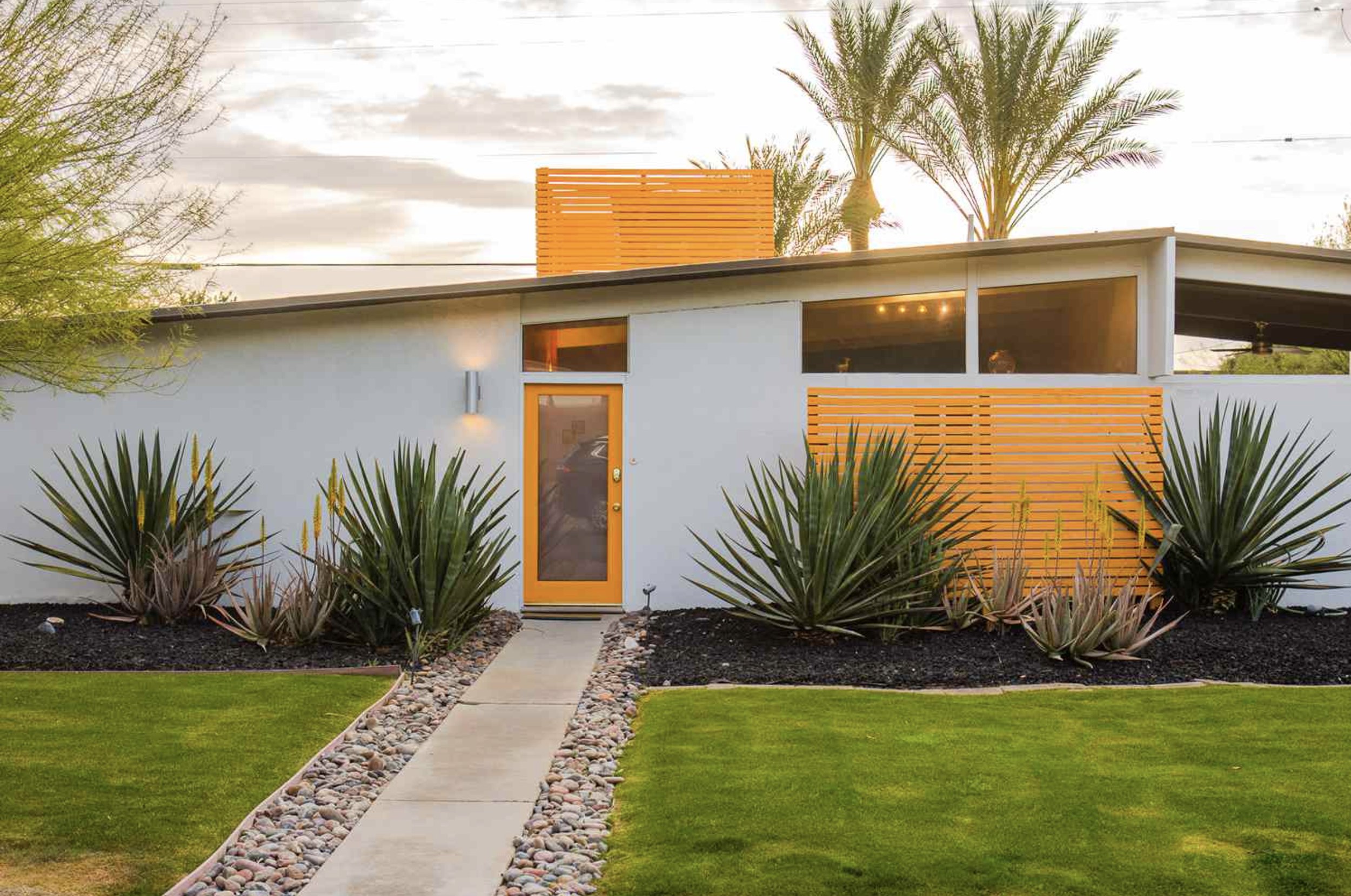A Love Letter to Mid-Century Modern: The Enduring Allure of America’s Most Iconic Architectural Movement
There’s a reason why mid-century modern (MCM) architecture continues to captivate homeowners, designers, and preservationists alike. It’s not just a design style—it’s a philosophy, a lifestyle, and a cultural milestone that redefined American living in the 20th century. From clean lines and open spaces to expansive glass walls and an intentional integration with nature, mid-century modern homes reflect a timeless simplicity that still feels fresh, sophisticated, and deeply human.
Whether you're newly discovering the style or have long been a devotee, this post is designed to serve as both an introduction and a deep dive into the roots, principles, architects, and iconic examples of mid-century modern architecture across the United States.
Let’s begin where all movements start: with the world that created them.
The Origins: A Postwar Canvas for Modernism
The mid-century modern movement emerged in the United States during a period of radical transformation, spanning roughly from the mid-1940s to the late 1960s. The end of World War II brought about a housing boom, a population explosion, and a renewed national optimism. Returning soldiers sought family homes in rapidly expanding suburbs, and a wave of forward-thinking architects saw an opportunity to meet this demand with fresh, functional design.
Influenced heavily by the International Style and the Bauhaus school—imported by European émigrés such as Ludwig Mies van der Rohe and Walter Gropius—mid-century modern architecture emphasized simplicity, rationality, and the expression of structure through form. It was a break from the past and an embrace of progress, reflective of a broader cultural shift in postwar America toward innovation, efficiency, and the promise of the future.
Architects used new materials like steel and plywood, embraced prefabrication, and experimented with modularity. Simultaneously, there was a desire to soften these industrial elements through warm wood tones, organic shapes, and deep connections to the natural landscape.
Defining Characteristics of Mid-Century Modern Architecture
Mid-century modern architecture isn't just about flat roofs and glass walls—though those are certainly hallmarks. It’s about the balance between minimalism and warmth, nature and shelter, experimentation and functionality. Some of the most recognizable features include:
1. Clean Lines and Geometric Forms
Simple, horizontal lines dominate both the roofline and the facade
Emphasis on rectangular volumes and functional floorplans
2. Expansive Glass and Transparency
Floor-to-ceiling windows and sliding glass doors
Clerestory windows for added light without compromising privacy
3. Indoor-Outdoor Integration
Patios, atriums, courtyards, and breezeways
Materials like stone and wood that extend from interior to exterior
4. Open Floor Plans
Flowing living, dining, and kitchen spaces with few interior walls
Emphasis on communal living and visual connection
5. Honest Use of Materials
Unadorned wood, steel, brick, and glass
Minimalist detailing that highlights structural elements
6. Pops of Color and Playful Accents
Accent walls, geometric tilework, and vintage hues like avocado, mustard, and teal
The Masters Behind the Movement
Mid-century modernism wasn’t shaped by one hand but by many visionaries whose ideas changed the architectural landscape of America. Here are some of the most significant contributors:
Frank Lloyd Wright
Though Wright predates the mid-century era, his influence was monumental. His Usonian homes—small, affordable, and designed for the average American—laid the groundwork for the MCM movement. His belief in organic architecture, blurring the line between indoors and out, and his mastery of horizontal planes profoundly impacted future generations.
Notable example: The Rosenbaum House (Florence, AL)
Credit: Seth Peterson Cottage
Richard Neutra
A protégé of Wright for a time, Neutra brought European modernism to Southern California. His homes are iconic for their glass walls, delicate steel frames, and sensitivity to landscape.
Notable example: The Kaufmann House (Palm Springs, CA)
Charles and Ray Eames
Industrial designers and architectural minds, the Eameses defined the aesthetic of American modernism through furniture, film, and their celebrated home.
Notable example: Case Study House No. 8 (Eames House, Pacific Palisades, CA)
Joseph Eichler
Eichler was a developer, not an architect, but his mission to deliver architect-designed modern homes to the middle class revolutionized suburban development in California.
Notable developments: Palo Alto, Orange County, San Mateo, and Concord, CA
Pierre Koenig
As a leading voice in the Case Study House program, Koenig’s sleek steel-and-glass homes are iconic in their minimalism.
Notable example: Stahl House (Case Study House No. 22, Los Angeles, CA)
Charles M. Goodman
A champion of East Coast mid-century design, Goodman designed thousands of homes in Washington, D.C.'s Virginia and Maryland suburbs. His homes are instantly recognizable by their post-and-beam construction and generous glazing.
Notable neighborhood: Hollin Hills (Alexandria, VA)
Notable Mid-Century Modern Homes Across the Country
From West Coast to East Coast, mid-century modern design has left its imprint. These homes and neighborhoods are pilgrimage sites for MCM enthusiasts:
West Coast Icons
Kaufmann House (Palm Springs, CA): Richard Neutra’s desert masterpiece.
Stahl House (Los Angeles, CA): Koenig’s dramatic, cliffside glass box.
Eames House (Pacific Palisades, CA): A personal and iconic statement of MCM living.
Palm Springs: A mid-century modern mecca, home to neighborhoods like Twin Palms and Vista Las Palmas.
East Coast and Midwest Treasures
Hollin Hills (Alexandria, VA): Over 450 homes designed by Charles Goodman.
Glenview, IL: Home to the iconic House on the Hill by A. James Speyer.
Columbus, IN: A small city with outsized architectural significance, including work by Eero Saarinen and Harry Weese.
New Canaan, CT: Features work from the Harvard Five, including Philip Johnson’s Glass House.
Other Noteworthy Locations
Arapahoe Acres (Englewood, CO): The first postwar neighborhood on the National Register of Historic Places.
Sea Ranch (Sonoma County, CA): MCM ideals meet rugged coastal terrain in a unique planned community.
The Desert House by Jim Jennings (Palm Desert, CA): A late modernist homage to the style.
Why MCM Still Resonates
The appeal of mid-century modern architecture goes far beyond nostalgia. In today’s world of clutter, digital overload, and fast fashion, the clean lines and grounded naturalism of MCM homes offer something rare: simplicity with soul.
Timeless Design: The aesthetic still feels fresh, even 60+ years later.
Sustainability: Passive design elements, durable materials, and efficient use of space align with today’s environmental consciousness.
Blending Nature: In a time when everyone is so busy, connecting inside and out helps bring tranquility.
Human-Centric Design: MCM homes are designed to be lived in. They don’t just photograph well—they feel good.
With the growing movement to preserve and restore mid-century homes, there’s a renewed commitment to honoring this era not just as a trend, but as a legacy.
Resources and Further Exploration
Interested in diving deeper? These resources offer further insights:
Books: "Mid-Century Modern: Furniture of the 1950s" by Cara Greenberg; "Modernism Rediscovered" by Julius Shulman
Documentaries: Visual Acoustics, Eames: The Architect and the Painter, People in Glass Houses
Events: Modernism Week (Palm Springs), Docomomo tours, Hollin Hills Home and Garden Tour
Communities: Facebook groups, Reddit forums, and Instagram accounts dedicated to MCM living, buying, and restoring
Looking for a Mid-Century Modern Home?
If you’re a fellow mid-century modern lover—or someone searching for a home that speaks to your aesthetic values—you’re not alone. Whether you dream of a Charles Goodman original on the East Coast or a breezy Eichler in California, I can help you find the perfect MCM gem.
Reach out today to begin the conversation. If you’re looking for a mid-century modern specialist in your neighborhood, click here.






